Australia uses Type I plugs and operates on 230V at 50Hz. To keep your devices charged and safe, it�...
Travel Guides
Traveling to Vietnam? The country uses plug types A, C, and F, with a 220V, 50Hz power supply. This quick guide covers which adapters you'll need and whether you need a voltage converter.

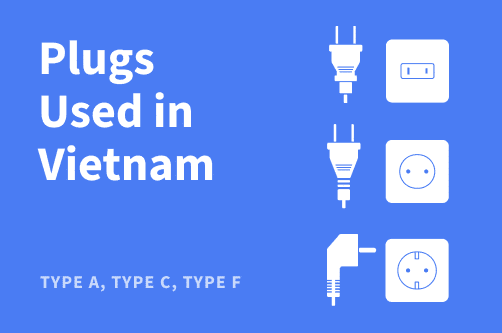
When traveling to Vietnam, understanding the country’s electrical plug types is important to keep your devices charged and functioning properly. This guide covers the plug types used in Vietnam, voltage and frequency, and whether you need an adapter or converter.
When you Google Vietnam plug types, you’ll find several associated with the country. However, the three most common are Type A, Type C, and Type F.
This plug has two flat parallel pins and is commonly used in North American countries like Mexico. In Vietnam, it is often found with low-power devices like phone chargers, small lamps, and some older appliances.
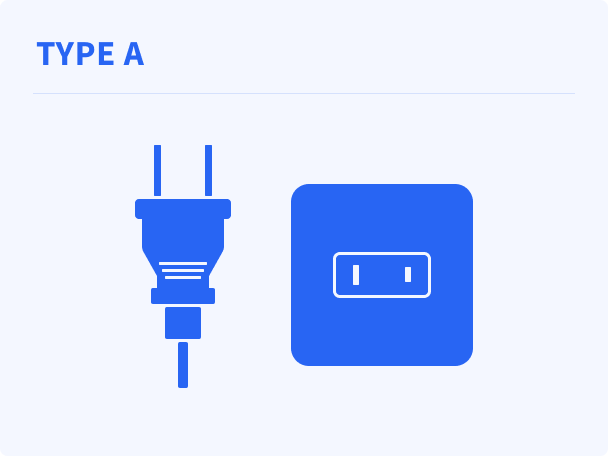
Also known as the Europlug, it has two round pins and is widely used across Europe, including France and Germany. Similar to Type A, Type C plugs are also commonly used for small electronic devices.
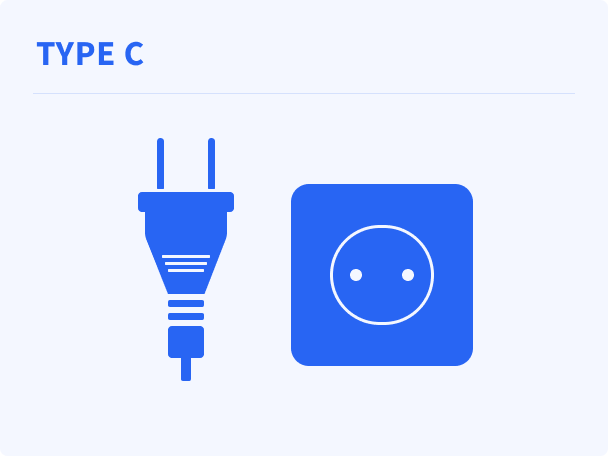
This plug has two round pins with two grounding clips on the side. It is also used in Spain and Norway. Type F plugs are designed for high-power appliances like refrigerators, washing machines, and some kitchen equipment.
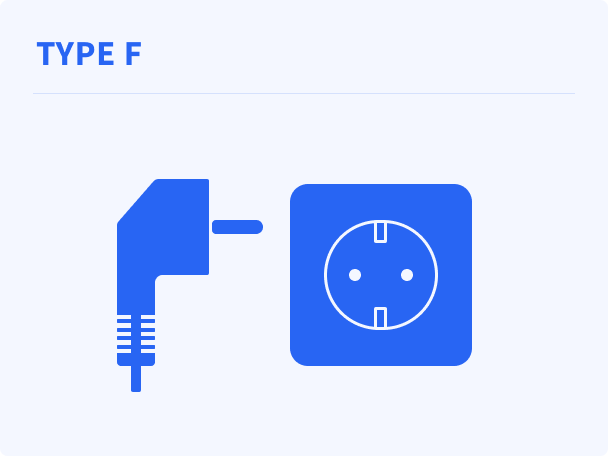
To keep your devices powered while traveling in Vietnam, you'll need a reliable plug adapter that fits local outlets. A charged phone is essential for navigation, translation apps, and staying connected, whether you're using a pocket Wi-Fi, a physical SIM card, or an eSIM.
This adapter is CE certified, meaning it meets European safety, health, and environmental protection standards, and it is also RoHS compliant, ensuring it is free from hazardous materials. They have dual inputs but do not convert voltage, so a separate voltage converter may be needed for devices without dual voltage.
This universal adapter features three USB ports and one Type-C port, supporting a 100-240V input voltage for charging multiple devices worldwide. Like Plug-In Solutions, JYDMIX is CE certified. It has built-in safety features, including an LED power indicator, plug lock system, surge protection, and overcurrent and short-circuit protection for secure usage.
This all-in-one travel adapter features four plug types, including Type A, B, I, and G, making it compatible with 200+ countries and regions while allowing you to charge up to six devices at once. It is CE certified and equipped with an 8A fuse, which helps prevent overcurrent and electrical damage by breaking the circuit if the current exceeds 8 amps. Additionally, it has safety shutters, which cover the socket openings to protect users from accidental electric shocks, and a plug lock system for secure usage, but it does not convert voltage, so ensure your devices support 100-240V before use.
Since reliable mobile data is just as important, many travelers look for hassle-free options beyond physical SIM cards and costly roaming fees. An eSIM provides instant access to mobile data without swapping SIMs and can be activated before your trip, ensuring seamless connectivity as soon as you land.
According to Vietnam’s government website, the standard electrical supply operates at 220 volts and 50Hz frequency.
If your home country's electrical system is different, you'll need to determine if your devices are compatible with Vietnam's voltage.
Many modern electronics, like smartphones and laptops, are designed with dual-voltage capabilities (typically marked as "100-240V, 50/60Hz"), allowing them to function safely within Vietnam's electrical parameters.
However, single-voltage devices—often including items like hair dryers, electric shavers, or certain kitchen appliances—may not be compatible and could be damaged or pose safety risks if plugged in without proper conversion.
For these devices, a voltage converter is essential if they only support 110V-120V, as it will step down Vietnam's 220V supply to match their required voltage. Always verify your device's voltage specifications, usually found on the plug or in the user manual, before connecting to Vietnam's power outlets.
There are 15 different types of electrical plugs and sockets worldwide, labeled from Type A to Type O. Each country or region has its own standard plug types, which means travelers often need plug adapters when visiting foreign destinations.
These differences exist due to historical electrical infrastructure developments, safety regulations, and voltage requirements.
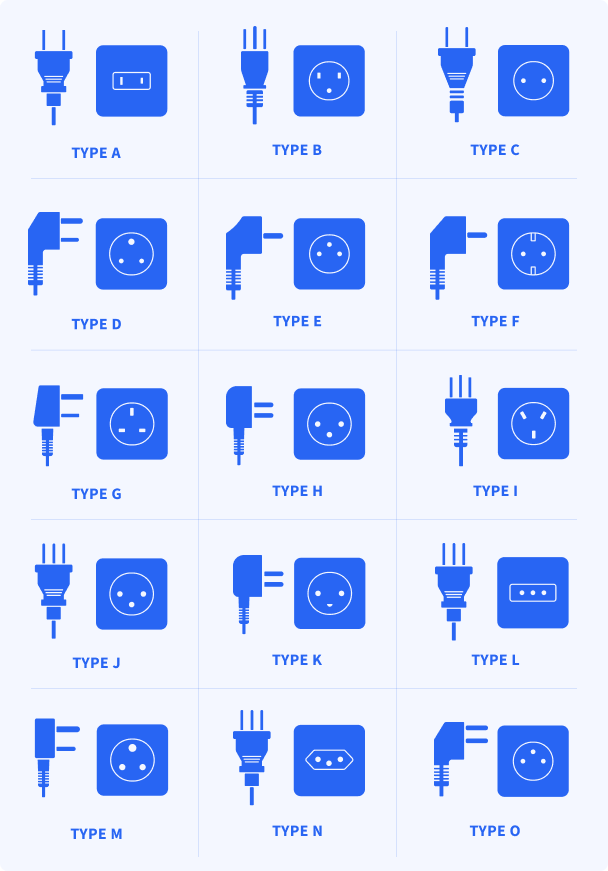
1. What plug types are used in Vietnam?
Vietnam primarily uses Type A, Type C, and Type F plugs. Travelers should check if their devices' plugs match these types or use an adapter.Add image
2. Do I need a voltage converter in Vietnam?
Vietnam operates on 220V at 50Hz, which differs from countries like the U.S. (110V). If your device is not dual voltage (100-240V), you will need a voltage converter to prevent damage.
3. Can I use a universal travel adapter in Vietnam?
Yes, a universal travel adapter that supports Type A, C, and F will work in Vietnam. However, ensure it is rated for 220V and not just a plug adapter without voltage conversion.
4. Are hotel rooms in Vietnam equipped with multiple outlet types?
Some international hotels offer multi-standard outlets that fit different plug types. However, budget hotels and older buildings typically have only Type A, C, or F sockets, so bringing an adapter is recommended.

